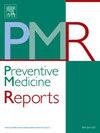在肯塔基州、马萨诸塞州和俄亥俄州,对治疗社区丁丙诺啡提供者地理可及性变化相关因素进行了多方法空间检查
IF 2.4
3区 医学
Q2 PUBLIC, ENVIRONMENTAL & OCCUPATIONAL HEALTH
引用次数: 0
摘要
目的获得药物使用治疗对于降低阿片类药物过量的风险至关重要。然而,使用单一度量来分析地理可达性可能会提供不精确的估计。我们的目的是研究美国三个康复社区研究(HCS)州(肯塔基州、马萨诸塞州和俄亥俄州)丁丙诺啡提供者地理可及性的变化,使用多重空间分析并确定地理区域和社会人口指标之间是否存在可及性差异。方法使用美国缉毒局数据库中2020年1月(参考点)和2022年6月的丁丙诺啡供应商数据。采用四种方法研究丁丙诺啡地理可及性的变化:1)核密度分析;2)费率变动分析(县、市);3)闵可夫斯基距离(到最近供应商的开车时间);4)在控制HCS社区(第1波或第2波)和其他社会人口因素的基础上,加强了2级浮动集水区(E2SFCA)和空间回归分析。结果我们发现丁丙诺啡在三个州的地理可及性都有所增加。可达性的改善集中在具有较高参考点可达性的地区。虽然我们的E2SFCA可达性指数变化的回归模型显示,肯塔基州第1波社区的可达性增长高于该州的平均增长,但我们无法在HCS社区与E2SFCA指数变化之间建立一致的关联。结论丁丙诺啡治疗的地理可及性至关重要,需要进一步努力改善农村地区和基线可及性有限地区丁丙诺啡提供者的可及性。本文章由计算机程序翻译,如有差异,请以英文原文为准。
A multi-method spatial examination of factors associated with changes in geographic accessibility to buprenorphine providers in HEALing communities study states Kentucky, Massachusetts, and Ohio
Objectives
Access to substance use treatment is critical to reduce the risk of opioid overdose. However, analyzing geographic accessibility using singular measures may provide imprecise estimates. Our objective was to examine changes in geographic accessibility to buprenorphine providers across three HEALing Communities Study (HCS) states, Kentucky, Massachusetts, and Ohio in the US, using multiple spatial analyses and determining whether disparities in access existed across geographic regions and sociodemographic indicators.
Methods
We used buprenorphine provider data from the Drug Enforcement Administration database in January 2020 (reference point) and June 2022. We used four methods to examine changes in geographic accessibility to buprenorphine: 1) kernel density analysis; 2) change in rates analysis (at the county or municipality level); 3) minkowski distance (drive-time to the nearest provider); 4) enhanced 2-step floating catchment area (E2SFCA) and spatial regression analyses, controlling for HCS communities (Wave 1 or Wave 2) and other sociodemographic factors.
Results
We identified an increase in geographic accessibility to buprenorphine across all three states. Improvements in accessibility were concentrated in areas that had higher reference point access. While our regression model of change in the E2SFCA accessibility index shows that Wave 1 communities in Kentucky had a higher increase in access compared to the state average increase, we were not able to establish consistent associations between HCS communities and changes in the E2SFCA index.
Conclusion
Since geographic accessibility to buprenorphine treatment is critical, additional efforts are needed to improve access to buprenorphine providers in rural areas and areas with limited baseline access.
求助全文
通过发布文献求助,成功后即可免费获取论文全文。
去求助
来源期刊

Preventive Medicine Reports
Medicine-Public Health, Environmental and Occupational Health
CiteScore
3.90
自引率
0.00%
发文量
353
 求助内容:
求助内容: 应助结果提醒方式:
应助结果提醒方式:


